Matt Damon Confesses How “Horrible” It Was Kissing Scarlett Johansson

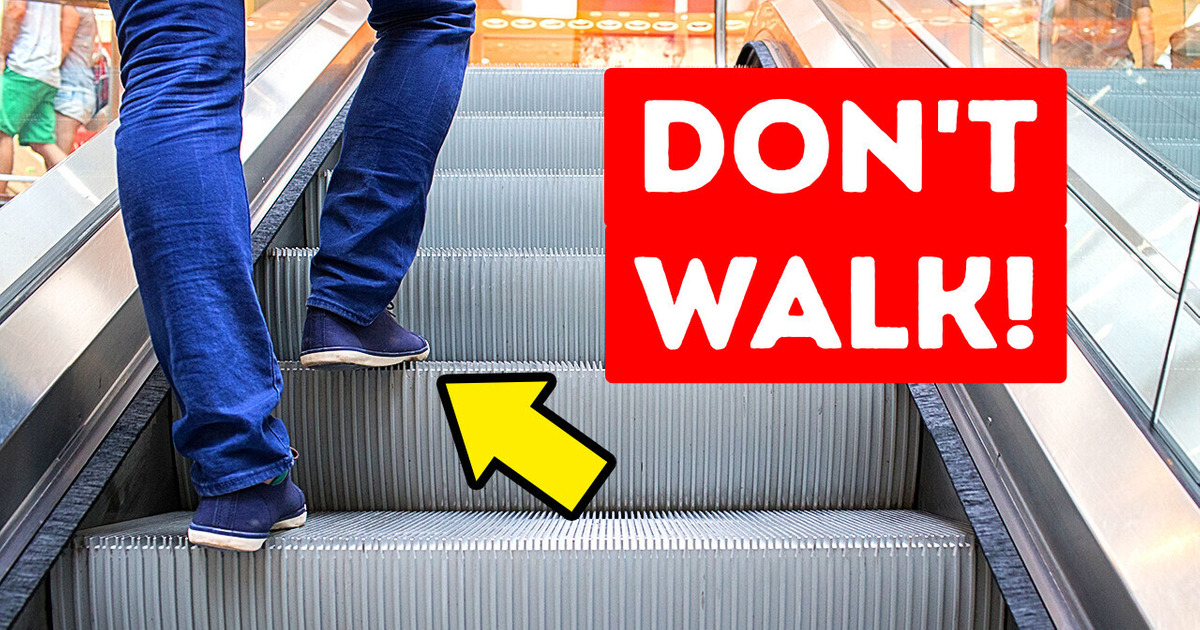
You’re shopping at your favorite mall, and it’s time to get to the next level. You notice the escalator stopped moving, so it’s probably broken. You can choose to walk on it anyway or look for the stairs or an elevator. So, what it’s going to be?
If you chose option A and bravely stepped on a stopped escalator, I have some bad news for you. You’re putting yourself at risk since the escalator isn’t designed to be used as regular stairs.
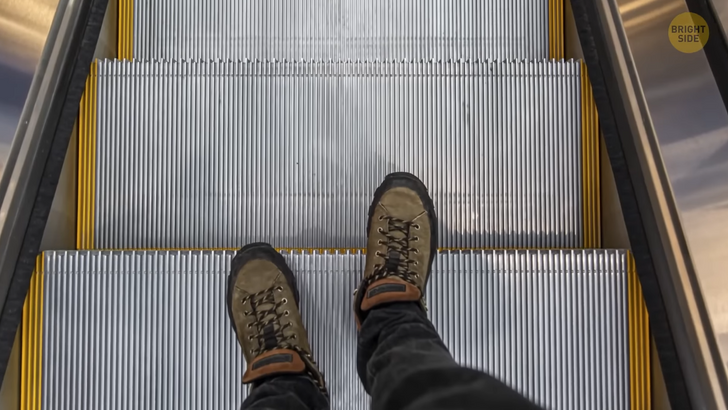
In case the escalator had stopped because of a mechanical failure, let’s say the brakes suddenly stopped functioning, it could roll away under load at any time. You never know when it starts moving again, so you might fall. The rise of the steps is normally higher on escalators than on regular staircases, so depending on where the moving stairs stop, some of them won’t be even. You might trip on them easily, especially when walking down.
Plus, escalators are designed to carry only a certain load at the same time. When people are moving like on a conveyor belt, there’s never too much weight at one moment. When the conveyor belt is stopped, the weight can go beyond the limit, and the escalator might collapse. If you still choose to walk on a non-working escalator, be prepared to experience something known as the “broken escalator phenomenon.”

Whenever you ride or walk on a properly functioning escalator, your brain marks it as a moving object. It fine-tunes the motor control of your legs and the balance mechanisms of your inner ear to adjust to this motion. Even when you see the escalator is obviously still, your unconscious brain recognizes it as the moving stairs. So once you’re walking up or down a stopped escalator, it feels weird and unnatural that it’s not moving.
In 2015, London Underground carried out research to see if it’s more efficient to stand or walk on a moving escalator. It turned out that standing-only escalators at Holborn station could carry up to 30% more people [16,220 compared to 12,745] during rush hours than escalators that allow walkers. On taller escalators, most people tend to stand rather than walk, leaving unused room on the left side.
When all these spaces were filled, the waiting time to get on the moving stairs dropped sharply. As a result, the station only got overcrowded once compared to the regular several times a week. The Underground took note of these results but didn’t ban walking on escalators altogether since many people still wanted to be able to do it.

Have you ever tried cleaning your shoes against those brushes you can see on any escalator? Well, they’re actually there for safety. These brushes are also called skirt deflectors. The skirt is the gap between the stairs and the side. The brushes keep your shoes, feet, and loose clothing away from the gap.
When you get on an escalator, you’re mostly focused on keeping balance and hardly pay attention to little details. You won’t notice the gap when everything is fine, but if the escalator goes out of order, it can give you a hard time. The gap leads down into the mechanism that makes the escalator move. If something like a bag or a jacket or even your toes get stuck there, it can interrupt the motors’ work and cause an accident. Escalator brushes are there to stop foreign objects from getting inside the gap or deflecting them.
Some escalators also have a yellow border to indicate danger and remind passengers not to stay too close to the edges. New Delhi metro has an extra safety feature inspired by the traditional draped outfit. Sarees can easily get stuck on the corners of moving stairs. To prevent that from happening, they added saree guards on both sides of the escalators.
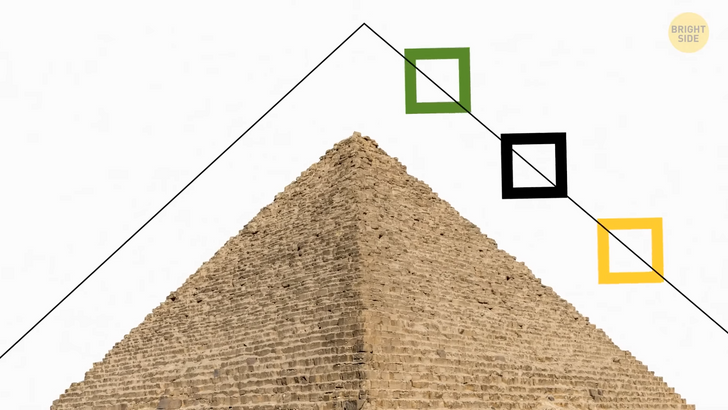
The concept of escalators is much older than you could possibly imagine. Their ancestors were used for the construction of the Great Pyramid at Giza in Egypt. They put over 2 million stone cubes on tree trunks to roll them upwards on artificial earth bridges around the construction site. The idea of constantly rolling wheels under the transported rocks became one of the basic principles for future escalators. Like with many inventions, several people are credited for having invented the moving staircase as we know it today.
American inventor and engineer Jesse Reno was one of them. He patented his invention in 1892. It was known as the “incline elevator” and was installed at the Old Iron Pier at Coney Island in New York City. It was extremely popular, and 75,000 people are reported to have tried out the invention during the 2 weeks that it was showcased. The steam-powered conveyor belt was moving at a 25° angle and traveled to a height of 7 feet. It was metal with a serrated surface, much like the escalators we know and love today.
There were comb-like teeth at the top and bottom landings to make the transition smooth. There was also a handrail for passenger safety. Already back then, Reno suggested that one escalator should take passengers up and another one — down. His invention was a success, and it was installed at various locations by the beginning of the 20th century. It was later purchased by the Otis Elevator Company.
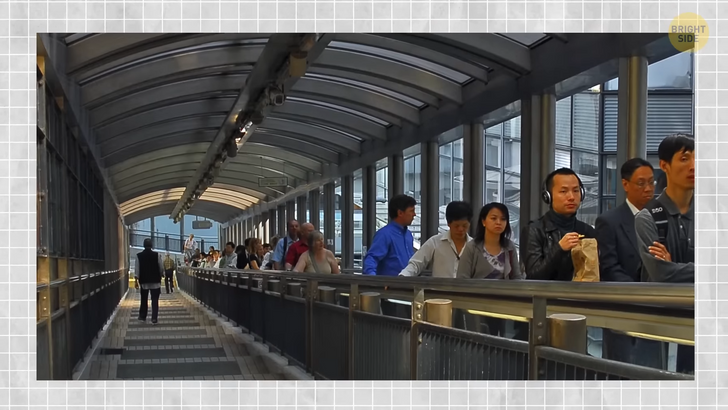
Escalators have transformed shopping — thanks to them, the stores were able to grow to many levels. But the first escalator, which was installed at the end of the 19th century at London’s Harrods store, scared many customers. It was the first moving staircase in England, and the people had no idea if it was safe to use. Some of them believed it could mess up their internal organs.
To calm them down somehow, the store staff offered terrified shoppers drinks at the top of the escalator, which was only moving up. The longest outdoor escalator system in the world is Central Mid-level Escalator in Hong Kong. It runs for around half a mile. The idea behind this engineering gem was to ease the traffic situation in this busy city district.
They built 20 escalators and three inclined moving walkways at the end of the 20th century. The system changes its direction to meet the needs of the commuters and runs downhill in the morning and uphill from 10:30 am till midnight. It is now popular not only with the local residents but also with tourists who use it to get through the historical district up to the dining and nightlife hub.
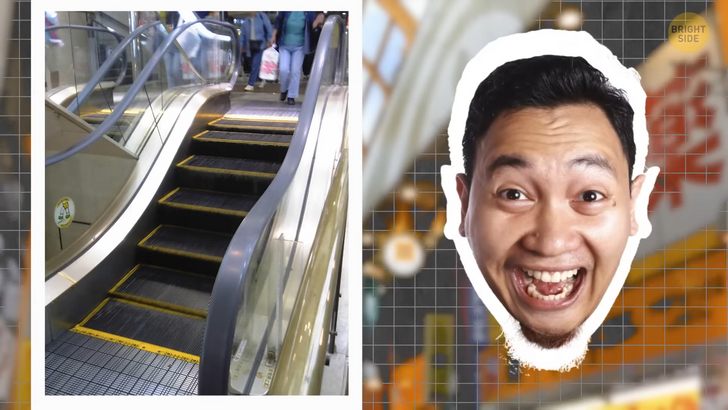
The escalator in the basement of More’s Department Store in Kawasaki, Japan, has made it to the Guinness Book of World Records as the shortest in the world. The “Puchicalator,” as it’s called, only has 5 steps and takes its passengers 2.7 feet down to another landing, from where they continue the descent manually. There are regular stairs separated by a guard rail from the escalator, and they’re a faster option for those in a hurry. No one knows the reason why the escalator had to be installed here. It was probably to set a world record and attract more customers to the store.
All escalators are custom-made, depending on where they will be installed. There are some basic settings and mechanisms, of course, but the height, width, angle of incline, and speed are varied to fit the customer’s requirements. Some escalators even have a “Royal Mode” since they are designed for royalty. These models come with a button that allows the passengers to start and stop the moving staircase whenever they want.
There are also models with cooling units for hotter regions, so the passengers can safely touch the handrails — you wouldn’t want to hold on to a frying pan, would you? Mobile escalators which travel on board airplanes can be used for boarding and disembarking passengers. There are also escalators high in the Alps, fitted with anti-slip treads for skiers, and stairs moving underwater through transparent tunnels at aquariums around the world.











